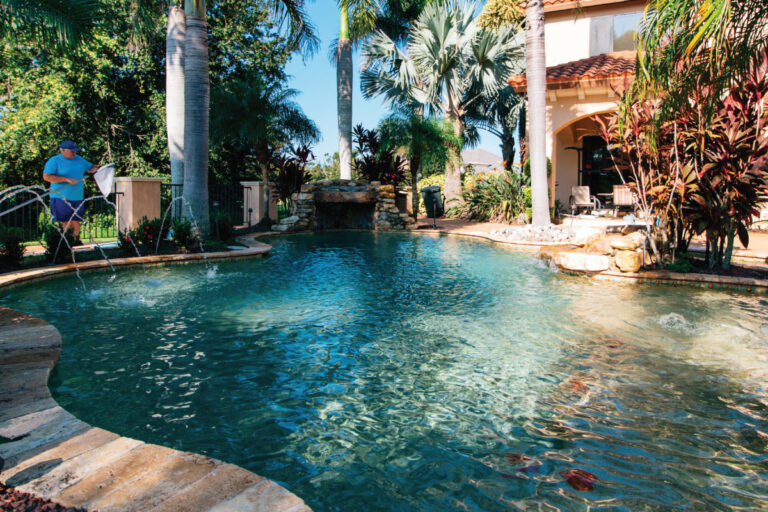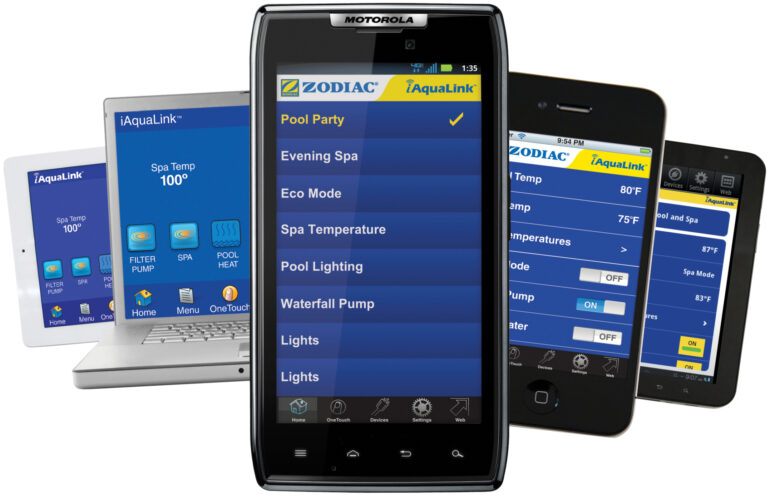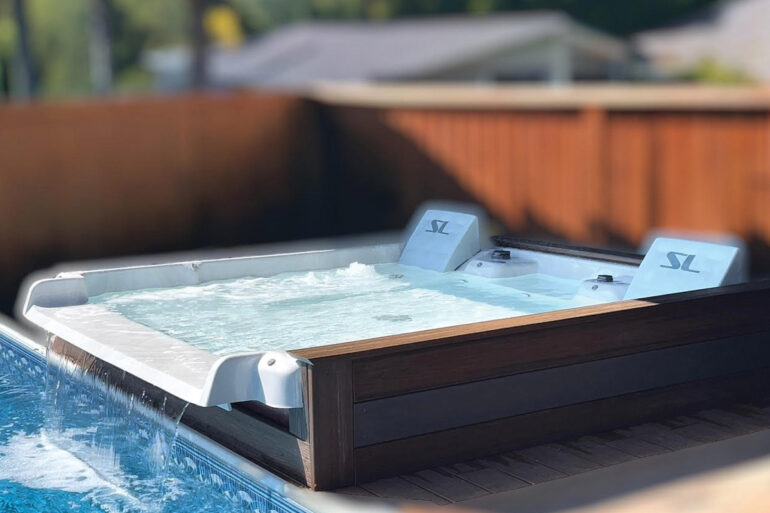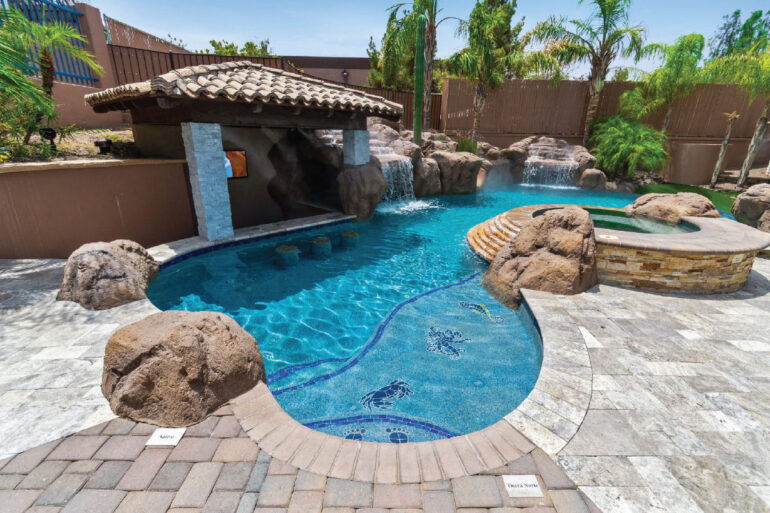High-Flying Photos
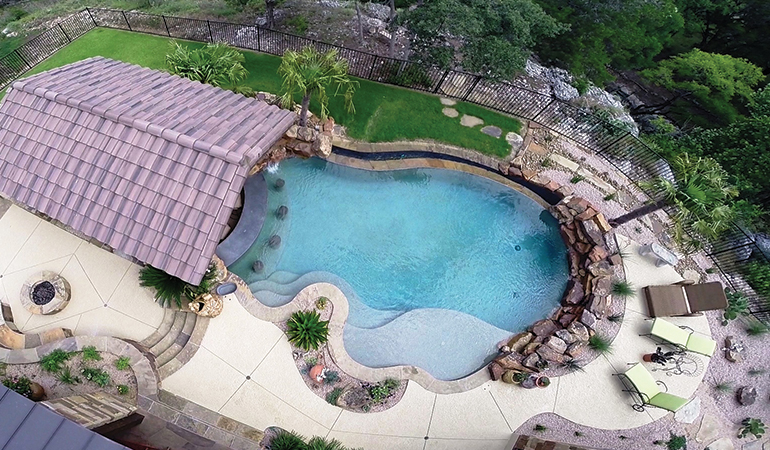
When Scott Cohen began using drones for aerial photography in 2013, he was not aware of another pool builder using the technique in the entire United States.
Three years later, drones have taken flight across the industry.
The days of standing on barbecue grills and climbing on rooftops to get overhead pictures may be coming to an end. Drone photography is opening exciting doors for sales, web design, marketing — and bragging rights.
A Higher, Wider Eye in the Sky
“As pool builders and designers, we’ve always worked from a plot plan view, but that’s not a view you ever got to see,” says Cohen, owner of California-based Green Scene Landscaping and Swimming Pools. “You pictured it from above, but the homeowner would only get to see it from the side. With a drone, you’re getting up and above. On vanishing-edge pools, you’re able to see the pool from the outside slope area looking back at the house. We’re able to capture images we’d never be able to capture without it.”
Cohen uses drones for marketing, but cameras with wings are also valuable construction tools. “It can help having pictures before you start a job so you can see the topography of the land a little better,” he says. Most importantly, drones are the ultimate upseller for companies like Green Scene, which create entire backyards, not just pools. “If you’re only showing the pool, that’s all you’re going to sell,” Cohen says. “When you’re able to show the outdoor kitchen and the patio cover and the swim-up bar and the fireplace, you can sell the whole backyard world.”
For industry experts, this has been a long time coming. “The evolution of high-quality cameras on low-cost drones has completely changed the business of industrial photography,” says Brett Lloyd Abbott, president of MYM Austin Inc., a marketing agency that works exclusively with pool builders. “Drone technology effectively allows a ‘pretty good’ photographer to quickly and easily take significantly better photographs.”
Costs, Regulations and Barriers to Entry
The Federal Aviation Administration requires most drones to be registered, and regulates how and where users may fly them. Regulations are fairly lax for recreational use, but the game changes when drones are used for business.
“We stay away from doing anything from a commercial aspect, because then we have requirements to follow,” says Michael Akins, general manager of Texas-based Ocean Quest Pools. “We don’t use it in any way to make money. Just to take pictures.”
There is also the issue of cost. When Akins launched his first drone shortly after Cohen two or three years ago, he spent around $3,000, but prices have since fallen dramatically.
“You can get a good-quality drone and camera from $500 to $1,000,” Abbott says.
For those who don’t want to make the investment, some businesses specialize in drone photography, although the wisdom of that strategy depends on frequency. “If you’re planning on doing it fairly regularly, it makes no sense to go out and pay someone every single time,” Akins says. Cohen uses a hybrid strategy. He owns his own drone, but employs a USC Film School graduate to fly it, take images and edit the videos.
Pro Tips
Abbott cautions against the common novice error of flying too high. “Treat it as an infinitely adjustable ladder that can comfortably shoot anywhere between 1 foot and 30 feet, with emphasis in the 15- to 20-foot range,” Abbott says. A lot of newbies inadvertently put themselves in the shot. “If you are going to photograph the entire backyard, then you need to be standing somewhere else,” Abbott says.
Also, go slow. “If the video looks and feels like it was shot by a drone [jerky or shaky], then you are doing it wrong,” Abbott says. “Start from a chosen fixed position, and then move slowly, gently and fluidly from one area to the next, showing the ideal view of the pool from all angles.”
Finally, prepare for a sizable learning curve. Both Akins and Cohen have fantastic stories involving expensive, frustrating mishaps: Akins learned that drones can be difficult to find after falling out of the sky into the woods. Cohen found out the hard way “that drones don’t swim well.”
Sidebar
Swimming pool builders typically purchase a policy of general liability insurance to cover claims resulting from their negligent acts. A standard exclusion in these policies provides no coverage for “bodily injury or property damage arising out of the ownership, maintenance, use or entrustment to others of aircraft regardless of whether it is owned or operated by or rented or loaned to any insured.”
Some homeowner policies might provide limited coverage for “model or hobby aircraft not designed to carry people.” But homeowner policies also contain exclusions for “business pursuits,” and a pool contractor photographing his completed jobs would probably have no coverage based on that business pursuits exclusion.
Foreseeable claims from the use of drones doesn’t just include injury resulting from drone collisions. A contractor who photographs a neighbor may have liability for invasion of privacy, trespass or commercial misappropriation, if the image or likeness of the neighbor is used in any advertising.
Contractors considering using drones in their business should contact their insurance brokers for more details. Insurance coverage may also be available through associations that specialize in commercial drone activities, such as UAV Systems Association and The Unmanned Aerial Vehicle Systems Association.
—Ray Arouesty, senior vice president, HUB International Insurance Brokers
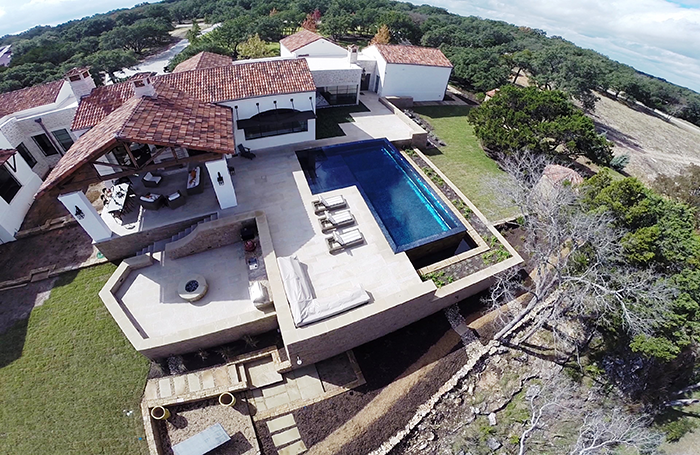
Photo by Ocean Quest Pools 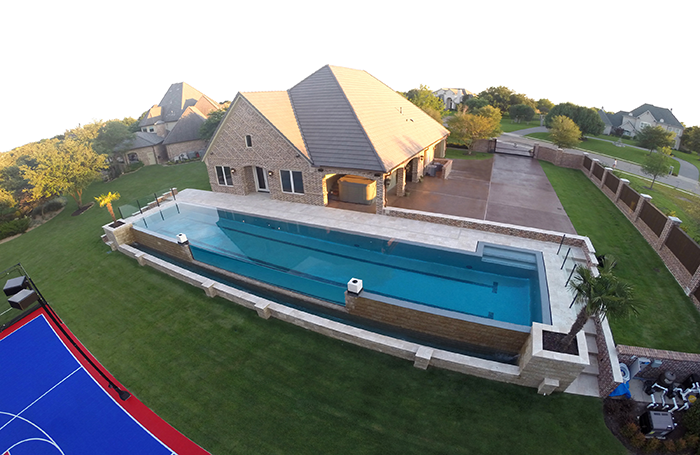
Photo by Ocean Quest Pools 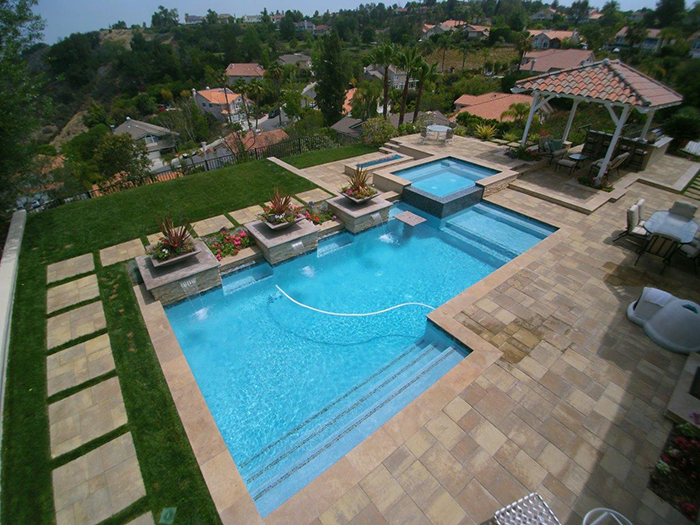
Photo by Green Scene Landscaping and Swimming Pools 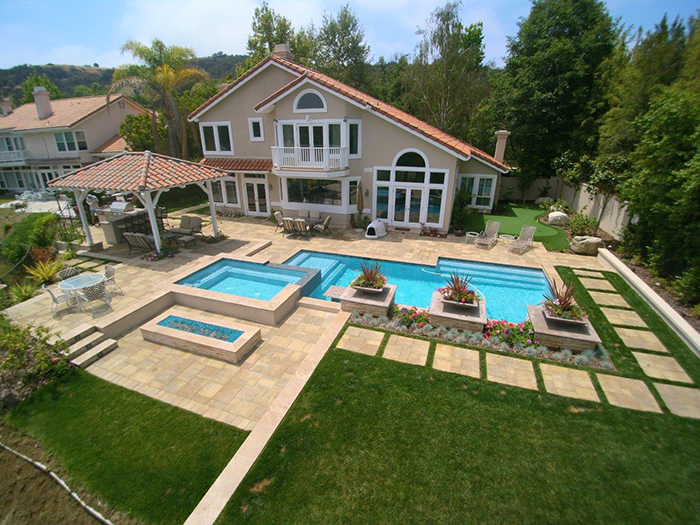
Photo by Green Scene Landscaping and Swimming Pools 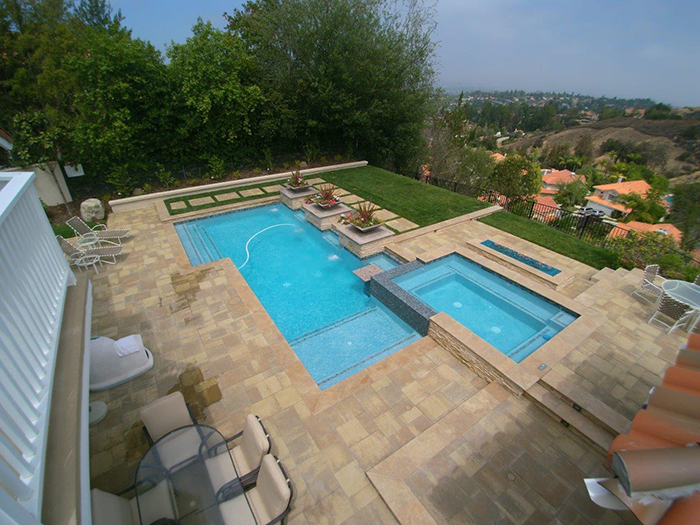
Photo by Green Scene Landscaping and Swimming Pools 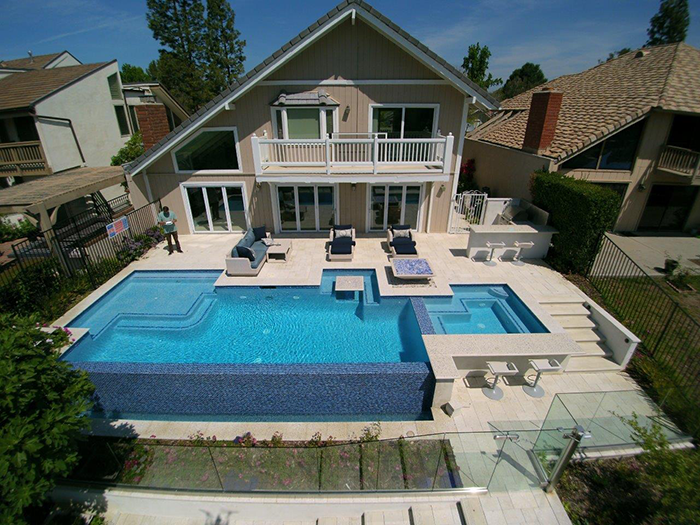
Photo by Green Scene Landscaping and Swimming Pools 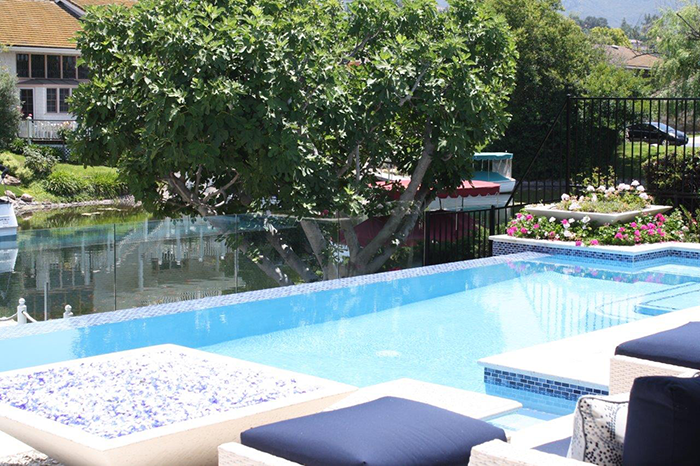
Photo by Green Scene Landscaping and Swimming Pools 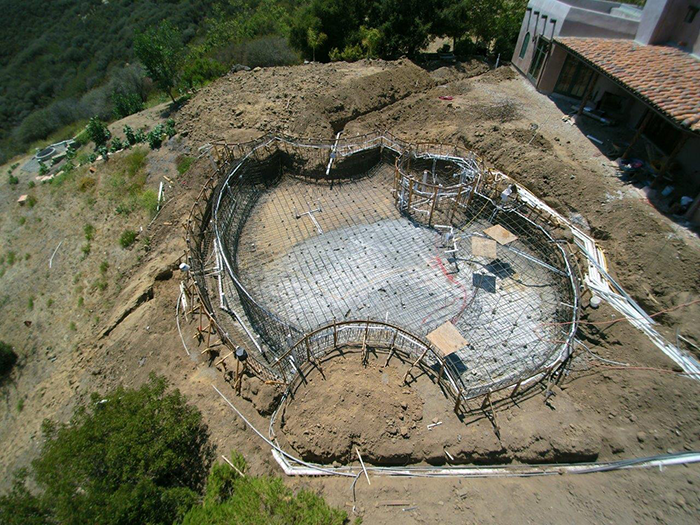
Photo by Green Scene Landscaping and Swimming Pools 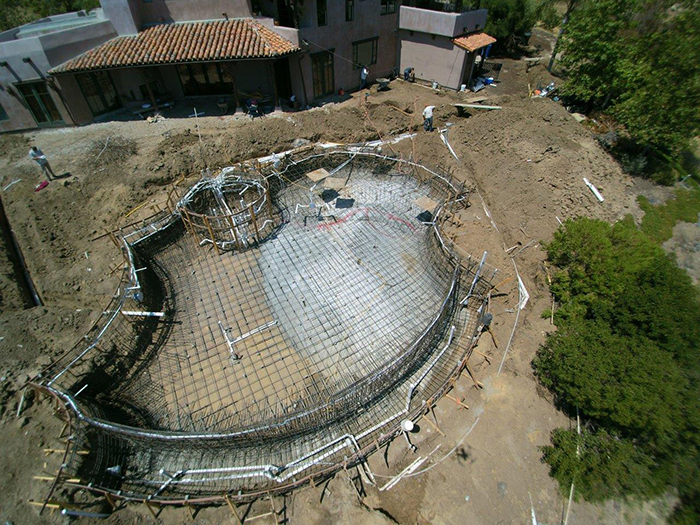
Photo by Green Scene Landscaping and Swimming Pools


